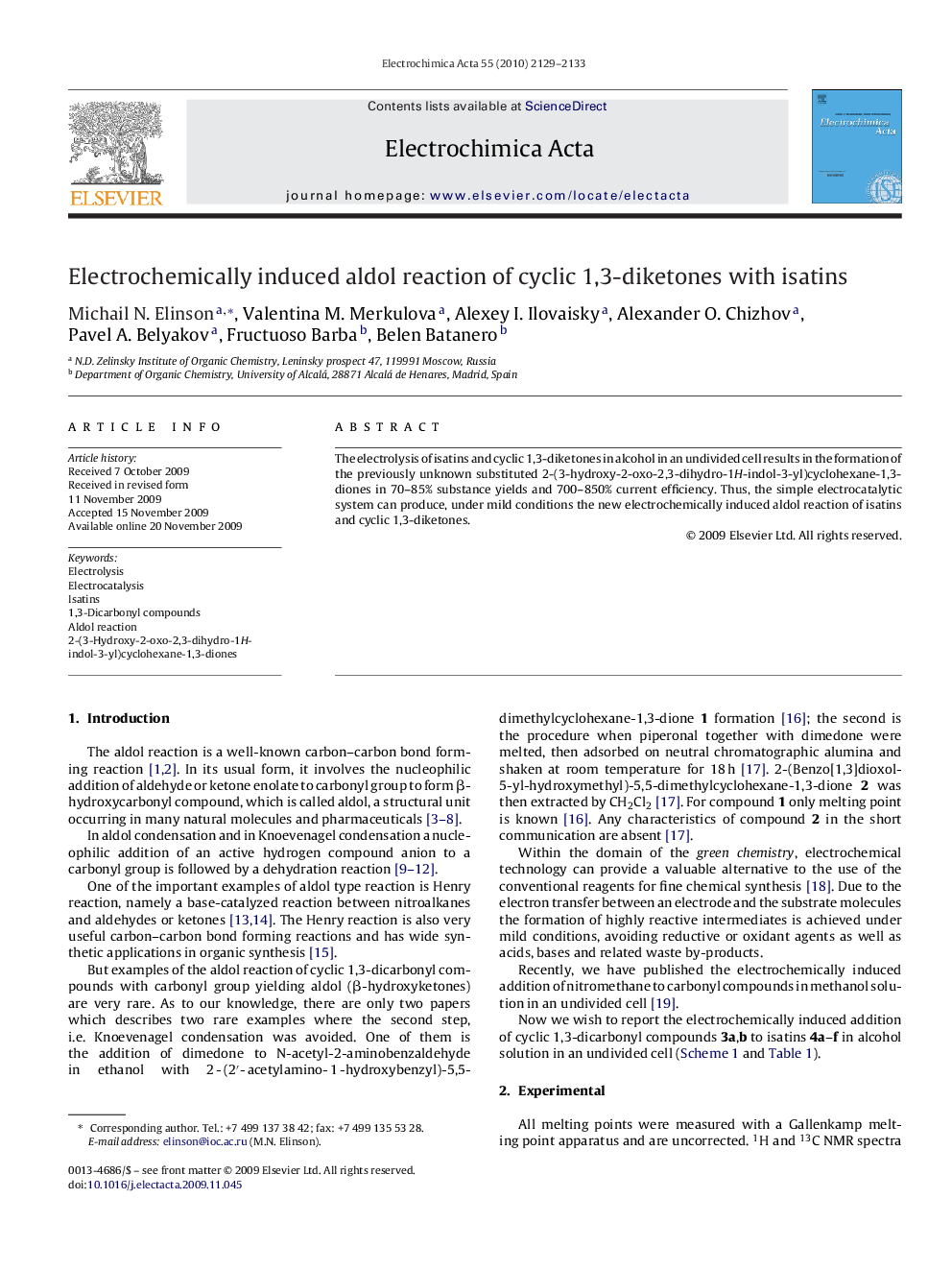| Article ID | Journal | Published Year | Pages | File Type |
|---|---|---|---|---|
| 191784 | Electrochimica Acta | 2010 | 5 Pages |
Abstract
The electrolysis of isatins and cyclic 1,3-diketones in alcohol in an undivided cell results in the formation of the previously unknown substituted 2-(3-hydroxy-2-oxo-2,3-dihydro-1H-indol-3-yl)cyclohexane-1,3-diones in 70–85% substance yields and 700–850% current efficiency. Thus, the simple electrocatalytic system can produce, under mild conditions the new electrochemically induced aldol reaction of isatins and cyclic 1,3-diketones.
Related Topics
Physical Sciences and Engineering
Chemical Engineering
Chemical Engineering (General)
Authors
Michail N. Elinson, Valentina M. Merkulova, Alexey I. Ilovaisky, Alexander O. Chizhov, Pavel A. Belyakov, Fructuoso Barba, Belen Batanero,
